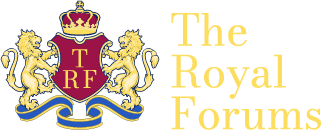Ancient Laws of Brehon in Ireland
No single theory as to the origin of early Irish law is universally accepted. Early Irish law consisted of the accumulated decisions of the
Brehons, or judges, guided entirely by an oral tradition. Some of these laws were recorded in text form by Christian clerics. The early theory to be recorded is contained in the Pseudo-Historical Prologue to the
Senchas Már. According to that text, after a difficult case involving
St. Patrick, the Saint supervised the mixing of native Irish law and the law of the church. A representative of every group came and recited the law related to that group and they were written down and collected into the
Senchas Már, excepting that any law which conflicted with the law of the church was replaced. The story also tells how the law transitioned from the keeping of the
poets, whose speech was "dark" and incomprehensible, to the keeping of each group who had an interest in it. The story is extremely dubious as, not only is it written many centuries after the events it depicts, but it also incorrectly dates the collection of the
Senchas Már to the time of St. Patrick while scholars have been able to determine that it was collected during the eighth century, at least three centuries after the time of St. Patrick. Some of the ideas in the tale may be correct, and it has been suggested by modern historians the Irish jurists were an offshoot from the poetic class which would have previously preserved the laws.
For some time, especially through the work of
D. A. Binchy, the laws were held to be conservative and useful primarily for reconstructing the laws and customs of the
Proto-Indo-Europeans just as linguists had reconstructed the
Proto-Indo-European language. For instance, historians have seen comparisons between Irish and
Indian customs of
fasting as a method of shaming a wrongdoer, in order to recover a debt or to demand the righting of a wrong.Other legal institutions prominent in early Irish law but foreign to most contemporary legal systems, such as the use of
sureties, have been considered as survivals from earlier periods.More recently historians have come to doubt such attributions. While few historians would argue that all Irish law comes from church influence, they are today much more wary as to what material is a survival and what has changed. A past may still be suggested for a certain legal concept based on Irish legal terms' being cognate with terms in other Celtic languages, although that information does not prove that the practice described by the legal term has not changed.
Today the legal system is agreed to be some mixture of earlier law influenced by the church as well as adaptation through methods of reasoning which the Irish jurists would have sanctioned. It is not, however, agreed as to just how large a role each of these aspects may have played in the creation of the legal texts, but rather it represents an important scope for debate.There is, however, one area where scholars have found material that is clearly old. A number of legal terms have been shown to have originated in the period before the
Celtic Languages split up because they are preserved in both
Old Irish and in the
Welsh legal texts. On the other hand, this is not regarded as unquestionable evidence that the practices described by such terms are unchanged or even have their origins in the same period as do the terms.
Another important aspect when considering the origins is that the early Irish law texts are not always consistent. Early Irish law is, like the Old Irish language, remarkably standard across an Island with no central authority. However, close examination has revealed some variations. Among these one can especially point to variations both in style and content between two of the major legal schools, as they are known; those which produced the
Bretha Nemed and
Senchas Már respectively.







 .....about 15 years ago My Sister toured Scotland & was told that Mc meant 'bastard son of' ?????????????
.....about 15 years ago My Sister toured Scotland & was told that Mc meant 'bastard son of' ????????????? Thanks for that info.
Thanks for that info.